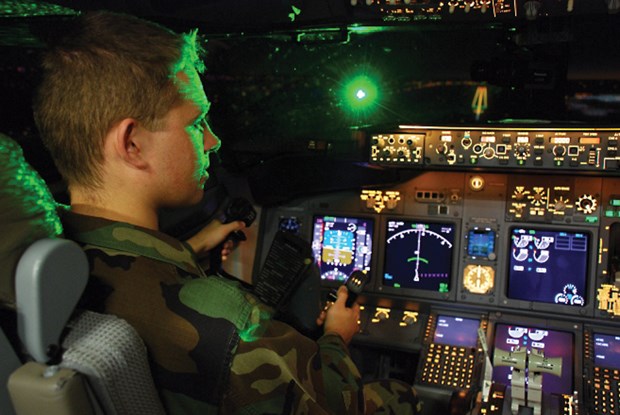Tracking down suspects who target aircraft and risk temporarily blinding pilots with powerful, hand-held lasers is no longer a shot in the dark.
Thanks to improved cooperation and communication between a number of organizations — police, government transport officials and air navigation staff — responding to incidents has become the near equivalent of most other crimes.
“It’s now like responding to a bank robbery, a break and enter in progress or a similar call for assistance,” said Sgt. Cam Kowalski of the Richmond RCMP which handles an average of 35 calls a year where aircraft coming into YVR have been hit by the intense light from a laser.
And that’s no mean feat considering some of the lasers being used have a range of 100 miles or more — a capability that gives culprits the ability to set up and pin point aircraft from just about anywhere along the flightpath in the Lower Mainland.
“We’re responding to calls from places like Garry Point here in Richmond, out to Burnaby and Port Coquitlam,” said Kowalski who specializes in the field of visual interference with aircraft which is becoming more common as prices for powerful lasers make them more accessible.
“In the last 10 to 12 years there’s been a dramatic increase in laser strikes globally, which includes YVR,” Kowalski said. “What we’ve done is create a response protocol for laser strikes.”
It’s one now being used nationally with local law enforcement agencies racking up the best rate for arrest and conviction — four in the past six to eight months, Kowalski said.
“We’ve been able to close the (communication) loop between the actual aircraft on descent, to NAV Canada, E-Comm and the police in the jurisdiction affected,” Kowalski said.
“So, everybody is aware and responds accordingly when a call comes in, giving it the seriousness it deserves.”
Once police have been notified in the suspected community where the laser strike originated, the decision is made to employ a K-9 unit, or even task one of the RCMP’s two helicopters to try and locate the suspect(s).
As to why someone would target an aircraft with a laser, Kowalski said some may see it as a form of entertainment, while if an intent to harm is present, that vaults the offence into more serious territory.
Those found guilty are subject to federal and provincial penalties under the criminal code, aeronautics act and Canadian aviation regulations, Kowalski said, adding the penalties can include a $1,000 fine and forfeiture of the laser.
“Under the criminal code we’d like to see a substantial increase in terms of jail time due to the seriousness of the matter,” he added.
In the U.S., it can delve into charges of terrorism, Kowalski said, with one offender serving 14 years in prison.



